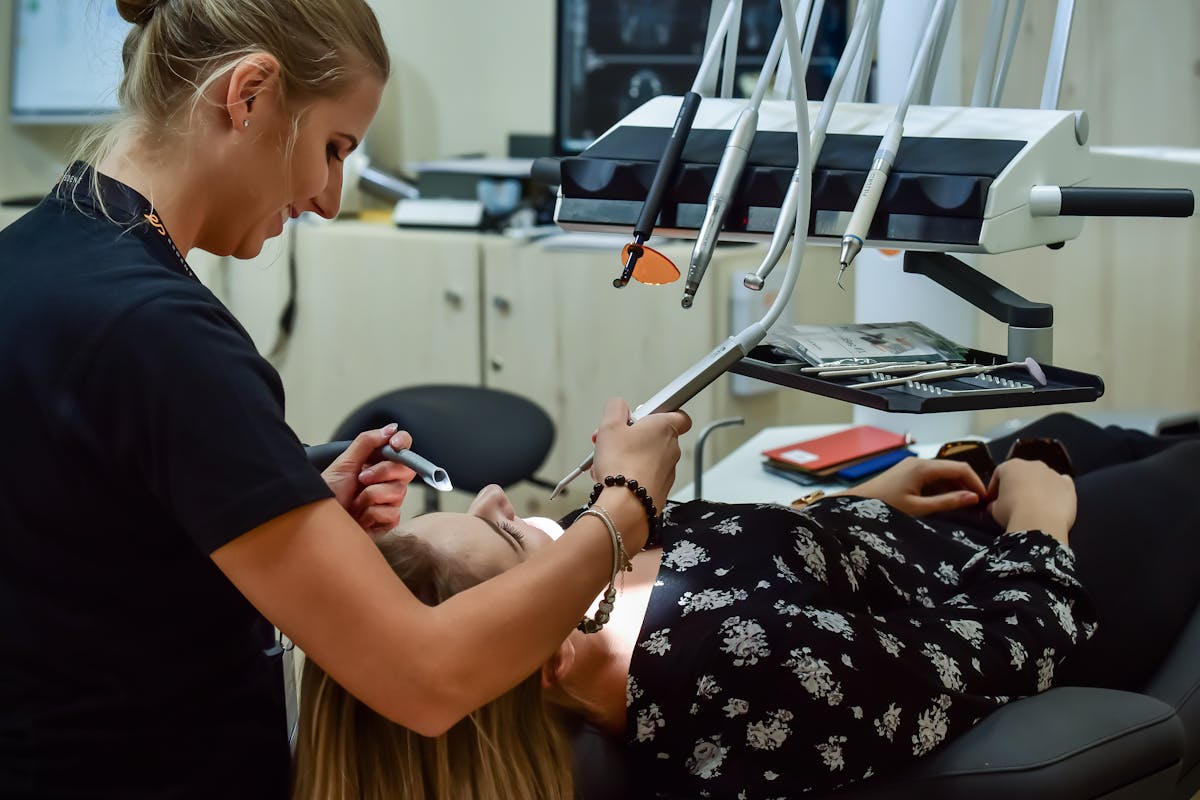
How to Overcome the Fear of the Dentist?
Oral surgeon Dr. Dušan Ostojić opens the topic of dental phobia to explain how fear can be analyzed and to encourage those struggling with it to visit the dentist.
One of the most common challenges faced by both patients and therapists is the unrealistic expectation that the fear of the dentist will “disappear immediately.” People want a quick solution: one therapy session, a good dentist, a single pill, and for the problem to vanish in an afternoon. But the truth is quite different, writes Stetoskop.info.
Fear of the Dentist Doesn’t Disappear at the Push of a Button – It’s Understood, Broken Down, and Gradually Reduced
Fear built up over years, layer by layer, often since childhood, cannot disappear in a day. Just as a wound on the heart doesn’t heal by ignoring it, deep phobia can’t be overcome without a process. Overcoming the fear of the dentist is a long-term process. It’s important to know what slows it down, what speeds it up, what its unraveling looks like over time, and why patience, consistency, and support matter.
How Does Persistent Fear of the Dentist Develop?
Dental phobia isn’t mere embarrassment or mild discomfort in the waiting room, nor sudden panic at the clinic door. It’s emotional and bodily memory of past experiences, amplified by imagination, shame, false beliefs, and years of avoiding the dentist. The most common causes are:
Negative childhood experience (e.g., painful treatment without explanation).
Experiencing fear through others – e.g., a parent showing fear or disdain for dentists.
Avoidance – the longer you avoid going to the dentist, the bigger the phobia becomes. Avoidance feeds all types of phobias.
Loss of control and humiliation – the feeling that someone “controlled our body” without our consent.
Shame about ugly teeth, bad breath, or generally neglected oral health.
“Fear doesn’t appear suddenly; it builds gradually like a house of cards. Each negative experience adds another layer. Over time, fear is no longer just a rational response to pain but becomes a life pattern,” explains Dr. Ostojić.
Psychoanalytic Basis of the Fear of Going to the Dentist
In psychoanalysis, fear of the dentist is often seen as a projection of suppressed emotions. The mouth symbolizes:
vulnerability (you can’t speak when something is in your mouth),
control (you can’t fight pain if you’re helpless), and
shame (teeth as proof of “neglect,” “weakness,” “decay”).
For some patients, the dentist becomes an unconscious figure of authority:
a parent who punishes,
a partner who judges,
society that evaluates.
“The fear of the dentist is actually the fear of facing oneself – vulnerable, messy, imperfect. That’s why therapy must go slowly, because we’re not only treating teeth but also the soul that for decades learned to remain silent, endure, and suffer from fear,” explains Dr. Ostojić.
Why Is Overcoming Dental Phobia a Process and Not a Moment?
Because the brain learns through gradual exposure
Our nervous system doesn’t respond to commands (“Don’t be afraid!”) but to experience. You need to repeatedly experience the clinic as a safe place and dental treatment as a pleasant experience so your brain can form a new association – the start of healing.
Because the body remembers more than the mind
A body that trembled in the chair, vomited before entering the clinic, or cried from shame doesn’t forget easily. Repeated corrective experiences are needed.
Because avoidance strengthens fear
Every time you avoid the dentist, the fear grows. The goal of therapy is to learn to stay in the clinic, endure discomfort, and see – together with your brain – that nothing terrible happens.
Because everyone has their own pace
Some progress faster, some slower. The important thing is the direction, not the speed. No one runs a marathon without training.
What Does the Marathon of Overcoming Fear of the Dentist Look Like?
Phase 1: Acknowledgment and information. The patient admits to having a problem. Learns what dental phobia is, reads about it, and seeks support.
Phase 2: First contact with the dentist. Slowly, without pressure. Visiting the clinic only for a conversation. No tools, no procedures. Building trust.
Phase 3: Gradual exposure to dental procedures. Short and painless interventions (tartar cleaning, check-up). Slowly introducing anesthesia, tools, treatment. Breaks, agreed hand signals, dentist’s empathy – all these help greatly.
Phase 4: Consolidation. The patient regularly returns for scheduled treatments and realizes they can go through them without problems. The body learns to breathe calmly, to sit without panic. Fear becomes a silent companion, but no longer the master.
Phase 5: Maintenance and confidence. The patient uses learned skills: breathing, visualization, inner dialogue. Keeps up hygiene, comes preventively at least every three months. Realizes they’re no longer the same – not only because of the teeth but also the attitude toward life.
What Helps in the Marathon?
CBT therapy – the most effective psychotherapy for phobias.
Emotion diary – writing down thoughts and reactions after each step.
Support from an understanding dentist.
Self-rewarding: every step forward deserves praise.
Practicing breathing, relaxation, visualization.
Hearing other patients’ stories – sharing normalizes the journey.
What Slows Progress?
Unrealistic expectations (“I must feel better immediately.”)
Shame (“Only I’m this weak.”)
Excuses (“Not now, maybe next week.”)
Lack of consistency
Wrong dentists – without empathy or understanding.
Dr. Ostojić’s Message – “A Marathon Is Run with Mind and Heart, Not Steps”
“Overcoming the fear of the dentist isn’t a sprint. It’s a process of personal growth, facing fears, and healing. It’s returning to yourself – the part of you that knows it can, but once got scared and froze. You don’t have to run fast.”
“You don’t have to beat anyone except yourself from yesterday.





